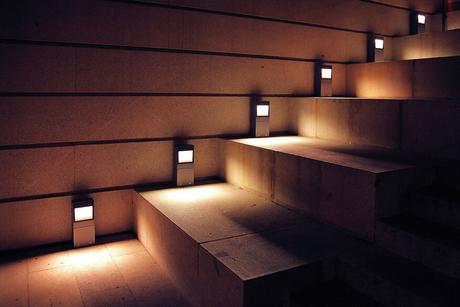As we get older, things that were once easy in our daily lives can become harder and harder. Some of them can even become dangerous - one such example is climbing and descending the stairs in our very own homes.
In the UK, around 290,000 people are seriously injured and 500 people die as a result of stair-related injuries every year.
There will always be risks when it comes to the elderly navigating stairs, but there are a few things that can be done to reduce the possible dangers and give your loved ones their independence back.
Let's take a look at what can be done to make stairs safer for seniors.
Tips To Make Stairs Safer For The Elderly
Get The Design Right
Let's start with the design of the stairs - if they are built in an unsafe way then no matter what we do, they will always have an increased level of risk.
Check the following items to see if the stairs are dangerous by design. If you find a problem, then it is likely I recommend contacting a professional to help make adjustments to the stairs to solve the issue.
Rise and Run
The rise (the height between steps) ideally should be between 6-7 inches.
The tread or run (the amount of space to tread on) should be a minimum of 12 Inches.
Landings/Rest Spots
If the stairs are a long climb (e.g. going up levels) then ideally there should be a landing.
This not only gives someone a chance to rest and catch their breath, but it also acts as a fall arrestor - so if someone does fall down the stairs - they will likely stop at the landing and not fall all the way to the bottom.
If possible, there should be handrails on both sides of the stairs.
They should be easy to grip and sturdy enough for the person traversing the stairs to put all their weight onto
Add Non-Slip Strips
Hardwood stairs look great, but they can get very slippery when they are wet or even just dusty.
An easy way to make them non-slip is to use anti-slip strips. These simply stick onto the existing stairs making them non-slip in all conditions.
LifeGrip makes a great version of these with a built-in glow-in-the-dark strip for additional safety at night.
Install Good lighting

Night time, or even dark conditions can make stairs much more dangerous. Installing lighting that lights up the stairs properly is very important.
Light switches should be visible, and within reach at both the top and the bottom of the stairs. This means that the light can be switched on when the person starts using the stairs and turned off when they have traversed the stairs safely - whether the user was traveling up or down.
Another option is stair motion lights which automatically turn on when someone approaches and uses the stairs.
Remove Loose Stair Runners
Stair runners may look good on stairs, and even make them quieter to traverse - but they can also be a trip hazard. Especially if they are loose and not fixed down.
Carpet or loose stair runners should be removed and instead non-slip strips (see above) should be installed to combat slippery surfaces.
Install a Stair Lift
There is no doubt that stairlifts are the easiest way to ascend and descend stairs, but they are almost probably the most expensive option on our list.
A stairlift is a mechanical device that uses a chair that moves along specially installed rails to help an elderly or disabled person to traverse the stairs safely and easily.
A stair lift contractor will need to visit your home and assess what is needed. They will design a system tailored for your home and then install it.
Home Advisor lists a price range of an installed system being between $2,000 - $15,000 - depending on the complexity of the system required and the length of the stairs.
Paint Stairs In Contrasting Colors
Painting each stair in contrasting colors can assist those with vision/depth perception difficulties. Alternating dark and light colors on each stair will make it easy for the user to tell where each step begins and ends.
You will of course want to think about the color scheme so it fits in with the decor and looks of the home.
Stairs Can Be Safe
Keeping ourselves, or our loved ones safe as we age is important. Stairs are one of the most dangerous parts of our home, but implementing some of the tips above can reduce the risk and keep us at home and injury-free.
